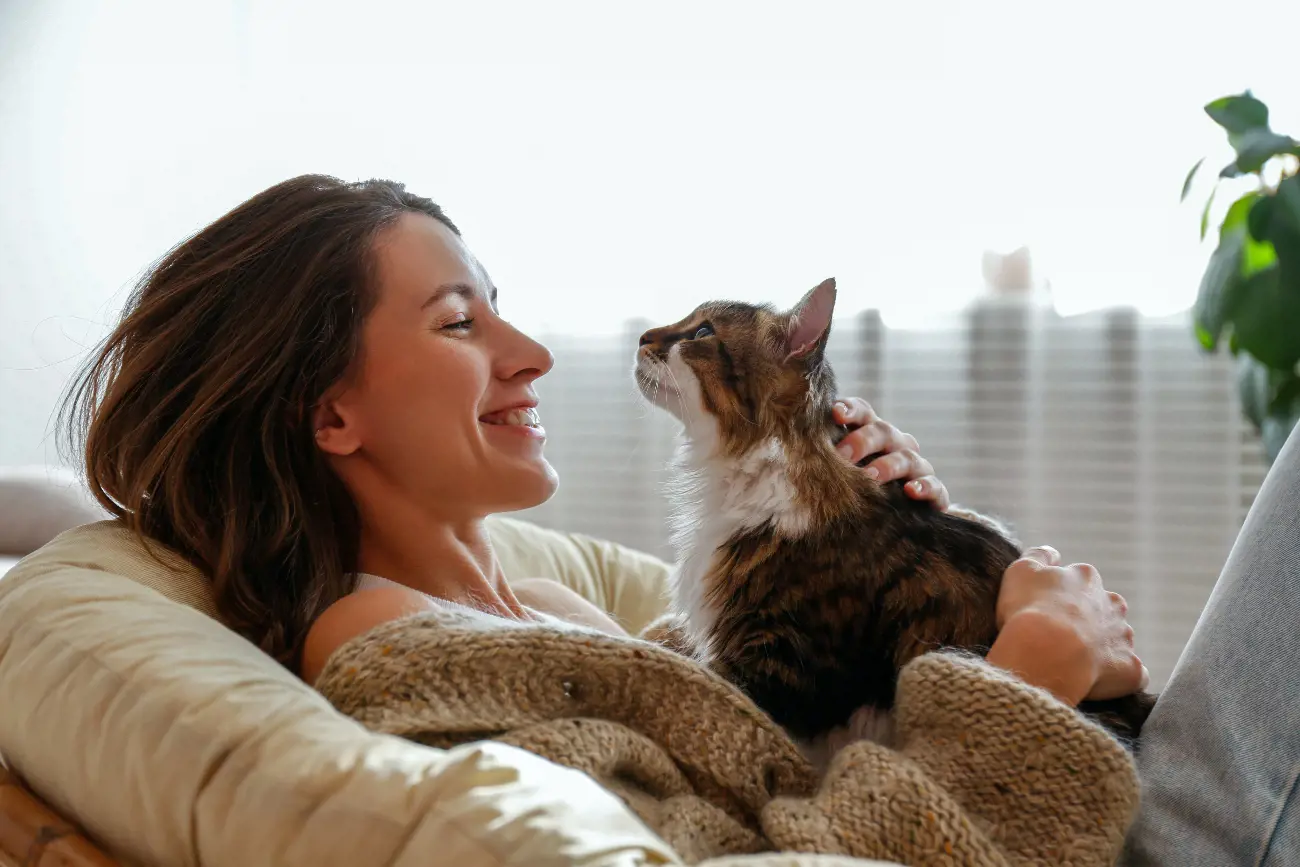Some Ragdoll cats may not enjoy being held due to their individual personalities or past experiences. Others may simply prefer expressing affection on their own terms.
Ragdoll cats, known for their placid and affectionate nature, often become beloved family members. Despite their breed’s generally calm disposition, individual Ragdolls can display a wide range of preferences and behaviors. Your Ragdoll’s dislike of being held could stem from a desire for autonomy or a lack of positive associations with the experience.
Understanding your feline’s unique character traits is essential in respecting their personal space and building trust. Cater to their comfort levels, and over time, your Ragdoll may grow to find being cradled more enjoyable. Remember, patience and positive reinforcement are key when bonding with your pet and encouraging them to accept new forms of affection.

Credit: www.imdb.com
The Ragdoll Breed And Their Known Behavior
Ragdoll cats, with their striking blue eyes and silky fur, often charm cat lovers around the world. Known for their docile and placid temperament, Ragdolls are usually associated with being lap cats. Despite these common traits, not all Ragdolls love to be held. Let’s explore the typical characteristics of this breed and bust some myths regarding their cuddliness.
Typical Traits Of Ragdoll Cats
Ragdolls are famous for their gentle and affectionate nature. Often large and muscular, they have a soft, semi-long coat that demands regular grooming. These cats are known to follow their owners from room to room, exhibiting a puppy-like behavior. Ragdolls typically:
- Enjoy human company and companionship.
- Display a calm disposition, adapting well to indoor living.
- Have a tendency to go limp when picked up, which is part of the origin of their name.
- Exhibit less tendency to climb compared to other feline friends.
The Myth Of The Cuddly Ragdoll
Not every Ragdoll cat adores the idea of being cuddled or held. While they may seem like the perfect cuddly pet, it’s essential to remember that each Ragdoll has a unique personality. Factors that may influence their preference for being held include:
| Factor | Influence on Holding Preference |
|---|---|
| Personality | Individual differences exist; some may prefer less physical contact. |
| Socialization | Early experiences with humans can shape their affinity for being held. |
| Trust | Building a bond over time encourages closeness. |
| Health | Discomfort or pain can cause aversion to being picked up. |
Understanding a Ragdoll’s behavior and respecting their personal space contributes to a happy relationship with your feline friend. While some may not enjoy being held, they often thrive on companionship and love being near their human family.
Credit: www.quora.com
Individual Personality Vs. Breed Tendencies
Many Ragdoll cat owners expect a fluffy bundle of joy that loves to cuddle. But what happens when your Ragdoll doesn’t seem to enjoy being held? It’s crucial to understand that, in a world of fur and purrs, individual personality often trumps breed tendencies. In this part of our blog post, we dive into the reasons behind your Ragdoll’s unique preference for personal space.
Personality Differences In Ragdolls
Contrary to popular belief, not all Ragdolls will fit into the same cuddly mold. Each cat comes with a distinct personality that can differ greatly, even among littermates. Some may seek out your lap at every opportunity, while others prefer to keep their affectionate moments brief. This can be due to a variety of factors, including genetic disposition and individual temperament. It’s important to acknowledge and respect these personality nuances as part of your cat’s unique charm.
Environmental Impact On Cat Behavior
The environment in which your Ragdoll was raised plays a significant role in how they interact with you. Cats raised in busy, bustling homes may become accustomed to constant engagement and display more tolerance for being held. On the other hand, those from quieter spaces might find extensive handling overwhelming. It’s essential to observe your cat’s body language and take cues from them—it’s a silent but effective form of communication that can build a stronger, more respectful bond between you and your furry friend.
Let’s explore some factors contributing to your Ragdoll’s preferences:
- Social experiences during their early weeks and months.
- Their daily interaction with humans and other pets.
- Changes in environment or routine that may cause stress.
Bearing in mind these factors is essential to understanding and nurturing the unique relationship with your Ragdoll. It’s all about balance and recognizing your cat’s individual needs.
Understanding Your Ragdoll’s Body Language
Understanding Your Ragdoll’s Body Language is crucial to strengthen your bond with your furry companion. Ragdolls, known for their docile nature, can still have personal preferences about how they like to interact. If your Ragdoll is not fond of being held, it could be a misunderstanding of their body language. Recognizing their cues of comfort and distress allows for better communication between you and your feline friend.
Signs Of Discomfort In Felines
Cats express discomfort in various ways and noticing these signs can prevent any unwanted stress for your pet. Look out for the following body language as indicators that your Ragdoll may not want to be held:
- Ears pinned back
- Whiskers pulled back
- Dilated pupils
- Twitches in the tail or tail tucked away
- Avoiding eye contact or hissing
Common Ragdoll Body Language Cues
Ragdolls have their own set of body language cues that can tell you a lot about their mood. Understanding these cues is key to knowing when they are open to affection and when they would rather not be held.
| Body Language | Meaning |
|---|---|
| Soft purring | Contentment and comfort |
| Kneading with paws | A sign of relaxation or seeking attention |
| Relaxed posture | Feeling safe and stress-free |
| Slow blinks | Expression of trust and affection |
When detecting these signs in your Ragdoll, you’re seeing an invitation for closer interaction. However, if they shy away or display any discomfort cues, it’s best to give them space. Respecting your Ragdoll’s boundaries will lead to a happier and more trusting relationship.
Factors Influencing A Cat’s Preference For Handling
Ever wonder why your Ragdoll cat squirms away when you try to cuddle? It’s not just a quirky pet peeve. Various factors shape how a cat feels about being held. Let’s explore what could be influencing your cat’s preference for handling.
Early Life Socialization
Kittens experience a prime socialization period from two to seven weeks old. During this time, positive encounters with people influence lifelong habits. A kitten not cuddled may grow up to avoid being held. Consider these points:
- Frequent, gentle handling during early life helps kittens feel safe in human arms.
- Kittens away from humans for too long may become distant.
- Each interaction shapes a kitten’s opinion of being held.
The Role Of Genetics In Feline Temperament
Genetics also play a part in your cat’s comfort with being held. Some breeds have a natural predilection for physical affection. Ragdolls are known for their docile nature but remember:
| Genetic Trait | Impact on Handling |
|---|---|
| Affectionate Breed Lineage | More likely to enjoy being held |
| Independent Breed Lineage | May prefer personal space |
Understanding these factors can help owners build a trustful bond. Respect your cat’s preference while gently encouraging them. Remember, patience is key!
How To Improve Your Ragdoll’s Tolerance To Being Held
Ragdoll cats are known for their laid-back nature. Some might not enjoy being held. Your fluffy companion might need time to get comfortable with cuddles. Improving your Ragdoll’s tolerance to being held can strengthen your bond. The process requires patience and training. Let’s explore how to gently increase your Ragdoll’s comfort with being held.
Earning Your Cat’s Trust
Earning trust is crucial before holding your Ragdoll. Start with short, positive interactions. Here’s how to build trust:
- Feed them tasty treats
- Engage in play with their favorite toys
- Speak in a calm, soothing voice
Notice their comfort level. Allow them to approach you first. This shows respect for their space.
Training Techniques For Handling
Training your Ragdoll to accept being held involves gentle steps. Start with brief sessions. Gradually increase duration and frequency. Here are essential training tips:
- Choose quiet, stress-free times for handling your cat.
- Support their body fully when lifting. Encourage confidence and security.
- Offer rewards and praise for calm behavior.
Regular, consistent practice helps build a more tolerant and affectionate Ragdoll. Use these tips to create a loving environment where being held is a positive experience.
When To Seek Professional Help
Understanding your Ragdoll’s reluctance to cuddling is key.
Is it behavioral, or is your pet in pain?
Recognizing when to get expert advice can safeguard their well-being.
Behavioral Issues Vs. Health Concerns
Not all Ragdolls are alike. Some adore hugs, while others don’t.
Behavioral quirks can cause disinterest in being held.
Yet, sudden changes could signal health issues.
Look for signs like aggression or yowling.
These could hint at pain, calling for a vet visit.
Consulting With A Veterinarian Or A Feline Behaviorist
Concerns over your cat’s change in behavior?
It’s wise to consult professionals.
Make a checklist of your cat’s habits and alterations.
Veterinarians check for injuries or illnesses.
Behaviorists address fears, stress, or past trauma.
Remember, each Ragdoll has its own character. It’s essential to rule out discomfort or illness early. This ensures a happy, snuggle-ready companion for years to come.

Credit: www.purelypetsinsurance.co.uk
Frequently Asked Questions For Why Doesn’t My Ragdoll Cat Like To Be Held
Do Ragdoll Cats Like Being Held?
Ragdoll cats often enjoy being held due to their affectionate and docile nature. They typically appreciate the physical closeness with their owners.
Do Ragdolls Like Getting Picked Up?
Ragdolls generally enjoy being picked up and held. Their docile and affectionate nature makes them tolerant of handling. Always support their body properly to ensure comfort.
Do Ragdolls Like To Cuddle?
Yes, Ragdolls are affectionate cats that often enjoy cuddling with their owners. They’re known for their gentle and friendly nature.
How Do You Get A Ragdoll Cat To Like You?
To bond with a Ragdoll cat, offer gentle petting sessions, play with interactive toys, maintain a calm environment, provide treats for positive reinforcement, and respect their space for trust-building.
Conclusion
Understanding the unique personality of your Ragdoll cat is crucial. Some may prefer less cuddling or have certain preferences when it comes to affection. Patience and observation can help identify the reasons behind their behavior. Remember, each Ragdoll is an individual; taking the time to learn about your feline friend will enhance the bond between you.



